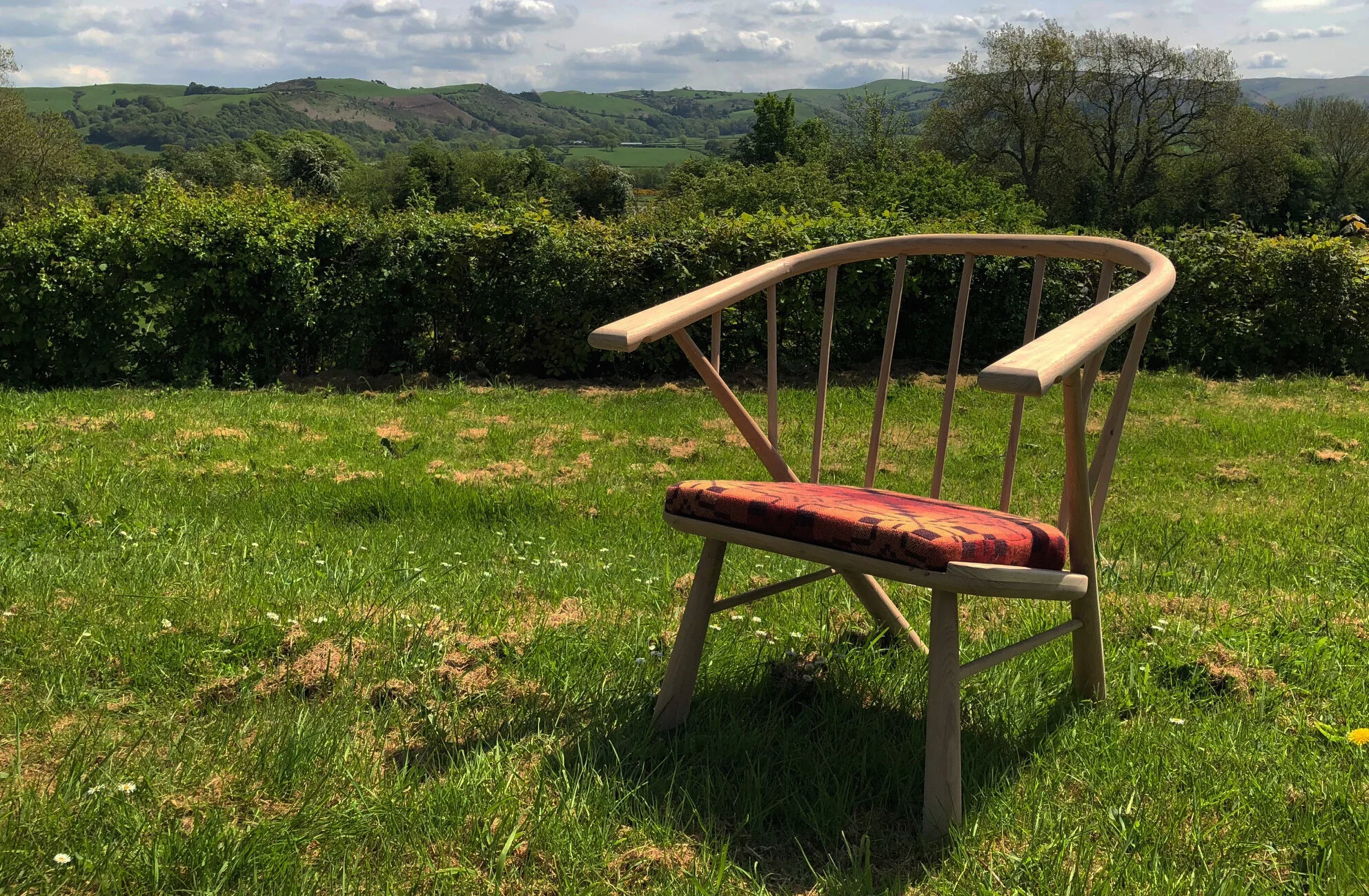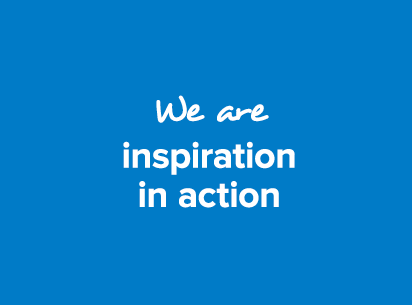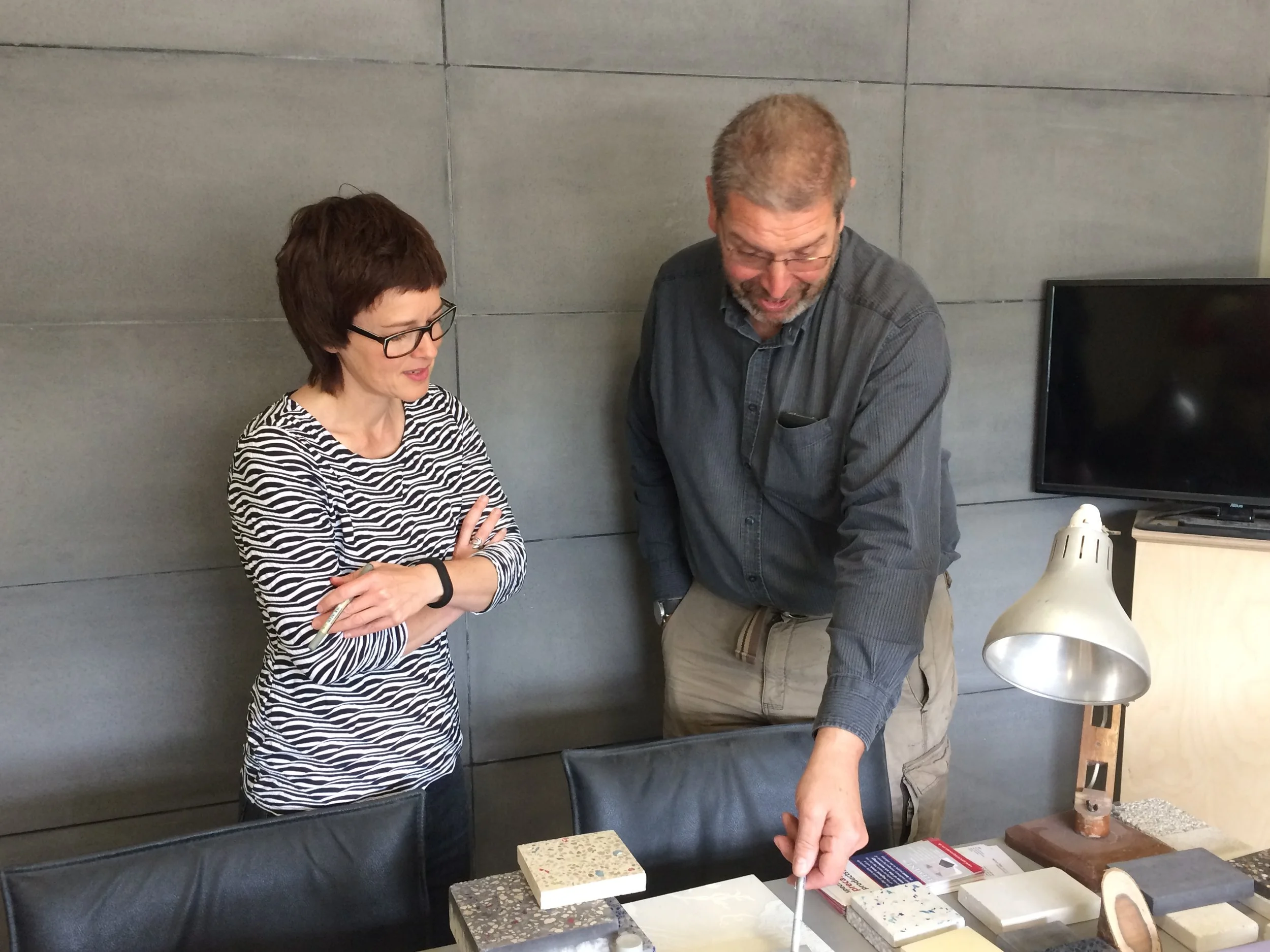“We need to grow rapidly whilst maintaining the family relationships that are so important to our brand. The amount that we are able to get through with Lynne in a short space of time is phenomenal, and will have a huge impact on our business.”
Up-skilling graphic designers for strategic brand management
Consumer products / mentoring / brand development
BIBaDO is a company born from the successful development of one great weaning bib for parents that reduces the mess and saves time on clean-up, while children enjoy the fun of food. One product became two, and the range continues to be expanded in this ambitious family business that knows branding is central to how they communicate with their customers, stockists and growing team. But after the smart move of taking on a graphic designer in-house, how do they develop their ability in strategic brand management?
With a monthly mentoring structure, a bespoke series of 1-2-1 sessions combine hands-on training with a review of current practice, external critique of gaps and opportunities, and the sharing of tools and resources. The aim is to develop the brand beyond a consistent graphic identity to delivering meaning that customers value and the workforce can live by, while the company continues to diversify their range and grow sales.
// Design management tools and training
// Brand management and hierarchy
// Developing user-centred design thinking
Technology meets design usability
Digital healthcare / User-centred design / Service design research
Tendertec is a company developing AI data-driven healthcare services that support people to remain healthy, independent and safe and as a start-up needed firstly to clarify the idea and outline potential users and buyers. With significant limitations to wearable alarms, Tendertec’s room sensor system is designed to automatically alert family members, caregivers or emergency services if someone has fallen. But the commercial success and scalability of any technology product is not just in the potential of intelligent data, but in designing the usability and simplicity of the experience.
After successfully securing investment, a care home pilot, delivered within the UK’s Digital Catapult programme, needed service design visits that shadowed care professionals to gain insights about their daily working needs, patterns of behaviour and the implications of adding new technology into a highly regulated and demanding environment. This design research informs the development and integration of app design, user interfaces and the appropriate visualisation of selected data. The overall aim is to strengthen the business and marketing strategy for wider commercial roll-out.
// User journey mapping and insight interviews
// User-centred app design strategy
// Personas development
"What Lynne does is listen to all the plans and ambitions and turns them into an ordered sets of actions, along with giving us new ideas that we hadn't even thought of."
Tendertec
“Friendly and collaborative, Lynne gave us a professional structure and pointed out potential pitfalls that we hadn’t even thought about. The brief and interview approach has been widely praised by the agencies we met. Our way forward became clear, equitable and fit for purpose. I would wholeheartedly recommend Lynne to help you see and think clearly in preparing an approach to working with creative agencies.”
Commissioning the right design agency
Cultural centre / rebrand and renaming / design brief + pitch process
Colston Hall is well-known by the public and cultural sector groups of Bristol and beyond. It has been at the heart of Bristol’s entertainment and cultural life for over 150 years. But it has become the lightning rod for a debate on the legacy of the slave-trader and philanthropist Edward Colston. In 2017, it was announced that as part of a major transformation project, a reopening would include renaming and rebranding, with reactions to the decision provoking significant debate.
The communications team were responsible for sourcing a branding agency to take on this project, and needed an accountable process for making this significant decision. Facilitated sessions captured the expectations across the team and a project brief was generated. The entire rebranding process was mapped so the team were prepared for commissioning, sign-off processes and ready to articulate the full range of guidelines and deliverables they would need. Appropriate local and national agencies were researched and long-listed for review, and a short-list of agencies were invited for chemistry meetings. The result was an informed and robust experience that produced a unanimous decision and introduced the marketing team to a previously unknown selection of relevant design agencies that will be available to them for future communications and engagement campaigns.
// Branding project strategy planning
// Agency research and shortlisting
// Design brief development
Sustainability communications:
Modified timber / sustainable development goals / brand strategy
Fibre7 produces LIGNIA, a range of FSC certified softwood that is specially modified to deliver the beauty and performance of hardwoods, without the need to cut down hardwood trees from rainforests. The company needed to develop its brand positioning and develop marketing materials, including the alignment and messaging of its sustainability credentials.
With a competitor review and supply-chain research, a strategic plan was presented to the Directors and the newly appointed branding agency. Routes were proposed for engaging in relevant and credible sustainability debates and use of frameworks such as the UN Sustainable Development Goals to generate a confident and authentic position. It was crucial for the management team to have a shared understanding of a multi-layer approach to communicating sustainability in general marketing messages as well as with in-depth technical detail for those who want to scrutinize. This approach would support the brand reputation with strategic ambitions and validated actions.
// Branding brief and agency shortlist
// Competitor and customer analysis
// Communications strategy
“Lynne has a wide corporate hinterland and very quickly sees the macro and micro opportunities that others would struggle to define. She has been able to marry up elements for us such as design, sustainability, competitive advantages and corporate reputation and then leave us with recommendations and pathways that make real sense.”
SME training programme / workshop design and delivery / sharing tools and methods
Design management workshops need to be hands-on to engage participants, and larger mixed groups need real-world examples they can all relate to. This 2-day workshop was prepared and delivered in Poland to 50 participants working in small mixed groups of SMEs, creatives, and business support people. The workshop introduced the value and impact of design for any business and demonstrated how to effectively plan and manage multiple design projects in line with strategic growth and competitiveness. It was delivered as four practical sessions with tools and methods that combine to give a broad experience of strategic design management.
Design thinking introduced the importance of gaining insights and sketching concepts through a rapid idea creation process. Creating user personas introduced the importance of designing for multiple customer and buyer expectations. Mapping service journeys introduced the importance of understanding the entire user/buyer experience and the ability to design solutions that provide value before and after purchase points. Prototyping combined the learning to frame and share a solution focused on a target audience and a specific stage in their user experience.
// Workshop design and delivery
// Design thinking activities
// Design management tools and processes
Sharing stories from a design supply-chain
Furniture design / sustainable supply-chains / scoping market opportunities
Wales lost much of its furniture industry from the 1990s, and this investigative project sought to find new ways to revive it, with a proposal for putting Welsh timber at the heart of a new design-led strategy. With some significant barriers for furniture designers to access and work with local timber, it is a challenging space, but with a series of insight interviews with manufacturers, designers and those in forestry and timber, substantial positive opportunities became clear.
Working with Wood LAB Pren, a project supported by the Welsh Government’s Rural Communities programme, the core aim was to educate, innovate and inspire people in the timber sector to recognise design as a driver of added value, competitive advantage and new user-led solutions. Focused around a series of face-to-face interviews from across the timber supply-chain, the 40-page project report brought together a collection of voices and resources in Wales, as well as from across the UK and globally. A launch event workshop was facilitated to create next-step actions, and as a result a subsequent project will explore the market potential for a collective of Welsh furniture designers to supply contract and retail buyers.
// Market research
// Insight interviews
// Report creation and launch event
“Feedback from the launch event was extremely positive and attendees were impressed with how it was facilitated. Comments about the report have noted that it is the most interesting and accessible read on this topic that people in the industry have ever come across.”
“Designing a hack to be really simple was surprisingly difficult because as academics we can over-think things. I like that many tiny ‘hacks’ can lead to big and meaningful change. Having this structured process for design thinking has given me a new approach to problem solving.”
Business School / design thinking workshops / workshop design and delivery
The Faculty of Business and Law at the University of the West of England (UWE) embarked on a Strategic Plan with ‘enterprise’ as a core area of distinctiveness. Enterprising skills and mindsets (e.g. creative and critical thinking, problem solving) are highly valued in today’s business environment. UWE students could develop these skills and mindsets best when faculty staff demonstrated them in their practice.
Working alongside Learning Experience Designer Peter Worth, two workshops were customised from the successful School Retool approach (a collaboration of the d.school at Stanford University, IDEO, and the Hewlett Foundation). Using this application of design thinking with faculty staff, this approach shared a change framework for developing a ‘hack mindset’ (starting small, having a bias to action, and being willing to fail forward and learn). Workshop 1 gave participants tools and support to experience the hack design process. Following workshop 1, each participant implemented their own hack and returned to workshop 2 to share and reflect on the results. After successful feedback, workshops were repeated to develop an internal community of staff applying this design thinking mindset.
// Workshop design and delivery
// Design thinking process
// Hacking mindset
Design-led growth strategy
Digital learning / growth strategy / brand + design thinking
An ambitious and growing digital learning company, Sponge UK works with global companies to deliver creative digital training and communications. With plans to grow from £4m to £10m turnover in 3 years, developing the in-house design thinking and service design capabilities was a key part of that growth ambition.
With an initial focus on the brand positioning and website design, the sales and briefing process was reviewed to place more emphasis on open-ended innovation potential and using story-led case studies to demonstrate the diversity and creativity of digital learning solutions. An internal language guide was developed and new sales materials were prepared ahead of an industry trade exhibition that made the diverse range of services on offer clearer. Internally, a review of project management tools and processes supported the management team to develop the design of highly creative exploratory solutions such as VR games, while also maintaining a highly efficient production process for large scale roll-out of regulatory training and onboarding programmes. With new tools and a stronger brand position, the result was that the team became clearer and more confident in articulating their design-led position for developing new business and new propositions that increased competitiveness.
// Brand positioning and design agency brief
// Internal brand language guide
// Project management tools and process review
“Lynne brings her expertise and experience in design thinking. She really took the time to get to know our business at depth and helped us achieve our goals of clarifying our brand and our position in the marketplace. Her strategic design skills combined with her knowledge of marketing tactics made a big difference to the project and significantly contributed to its success. I have no hesitation in recommending her.”
“Beneath Lynne’s calm and considered approach lies a wealth of knowledge and diverse experience. Able to simplify and clearly articulate complex information to multiple levels of stakeholders, she gains respect and trust throughout the lifecycle of projects.”
Brand refresh for an intergovernmental organisation
United Nations Volunteers / brand strategy and training / project management
MD Ross Thornley and his branding team successfully navigated the UN procurement process to win this project to reposition United Nations Volunteers (UNV) programme to reflect their strategic ambitions. Joining as Project Lead involved liaising with Ross, his Creative Director, the creative team as well as the Head of Communications and comms team on the client side.
The project delivered refreshed branding and a new set of ‘Communication Principles’ devised to endorse the collective importance of clarity, consistency and showing the emotional, as well as the rational, impact of the organisation. The project moved toward the creation of brand assets and a suite of tools to assist with a successful roll-out. Firstly, a ‘Brand Book’ clarified core messages. Secondly, the ‘Brand Guidelines’ was the ‘how-to’ document, containing all the expected details of the revised visual identity system, layouts, styles and best practice to create strong and consistent materials. Lastly, a ‘Communications Toolkit’ provided the practical set of logo files, assets and templates to support simple and efficient implementation of the changes. The whole set of tools were then provided in an online area for easy access.
And to complete the project, the Communications Team revisited their role of being ‘Brand Guardians’ with training workshops on the actions and behaviours that support a strong brand and launch planning guidance, so they were clear about working together and setting expectations.
New business development
precast concrete / process redesign / creative process
Specialist Precast Products (SPP) built its success on the manufacture of high quality precast concrete products for construction, but were being approached for creative design services and bespoke high-value products. With a desire to capitalise on these new business opportunities, SPP’s Managing Director realised that these creative projects had potential, but would require a different design-led approach to win new client relationships.
We repositioned the communications, with an emphasis on telling more confident stories about the creative capabilities. Young designers were invited into the factory to evolve their work, and SPP experimented with new techniques, such as 3D printing. At the same time, the internal process and language has been adapted for new high-value customers.
The results have been new clients, new business, a growing profile and a Design Management Europe (DME) award. New clients include award-winning Chelsea Flower Show garden designers and globally acclaimed artists. New projects delivered sculptural furniture pieces and developed new concrete properties and finishes. These new business opportunities sit alongside the continued production of high quality lintels, cills, keystones and quoins for commercial construction contracts, with a team that better understands the differences and benefits of being able to deliver both.
“The ongoing input and support we received to develop new design-led processes, products and training programmes was instrumental in helping SPP achieve a Design Management Europe Award. That has helped us attract new business from clients with clear design values.”











